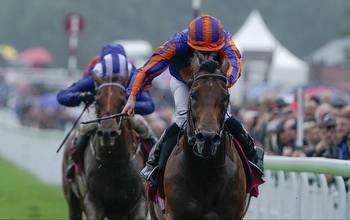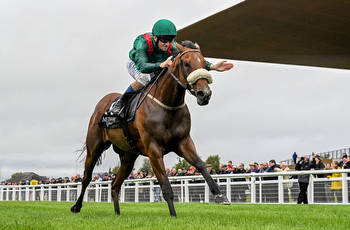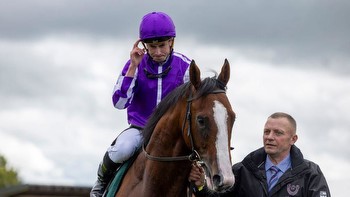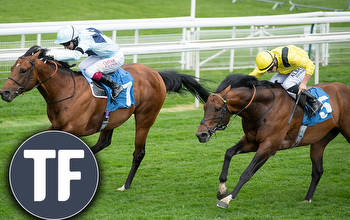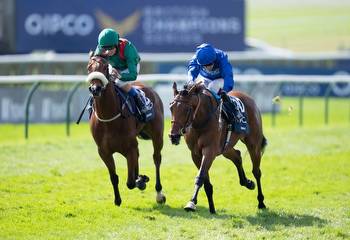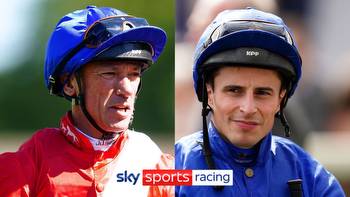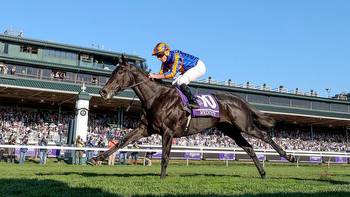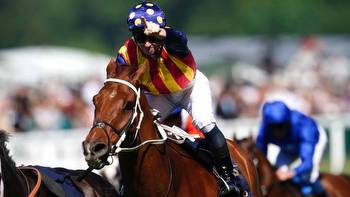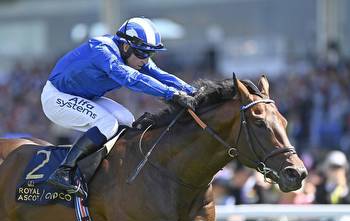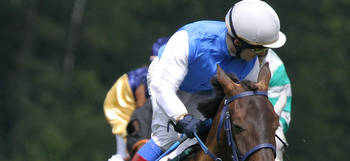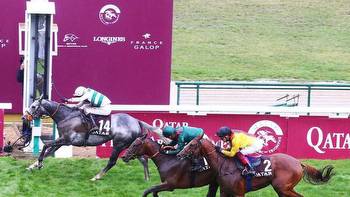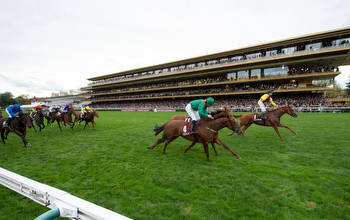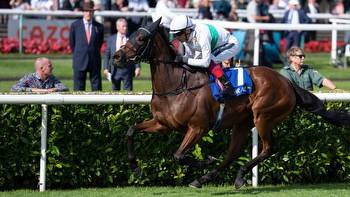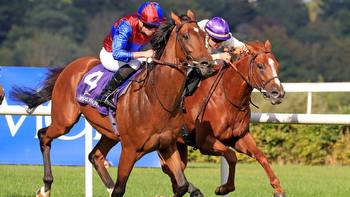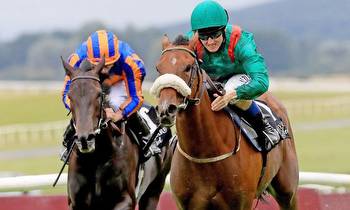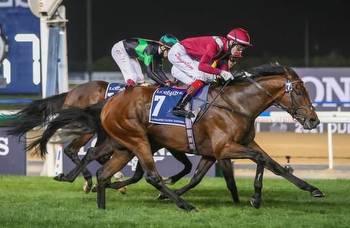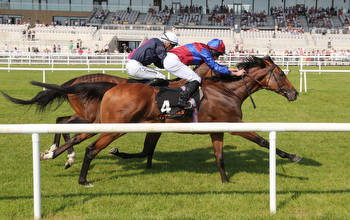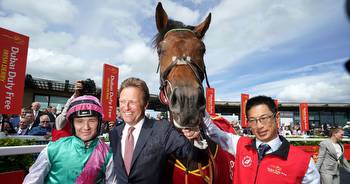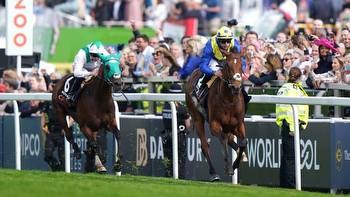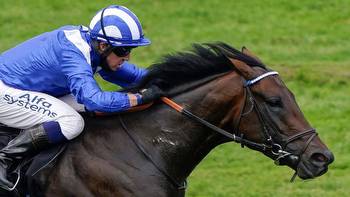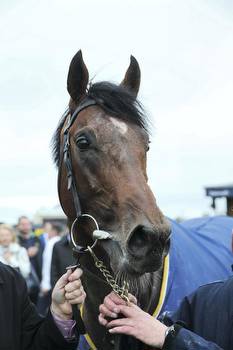Timeform's top horses in Europe in 2022
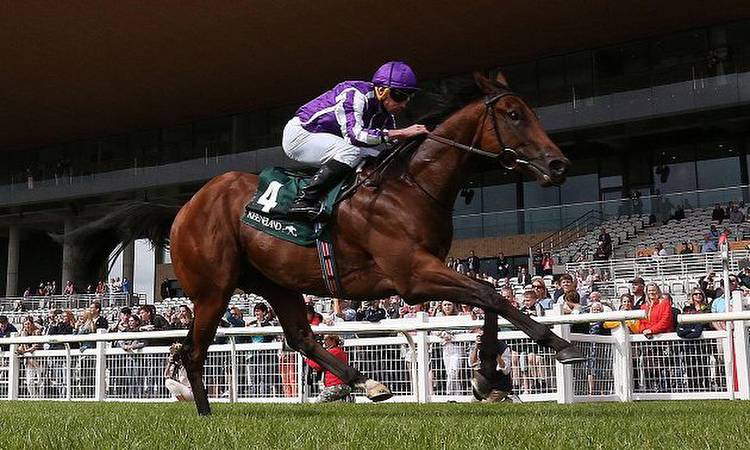
Timeform reveal their highest rated two-year-olds, three-year-olds and older horses of 2022
Top rated older horse
BAAEED (Timeform rating 137)
An outstanding rating of 137 made Baaeed the best horse in Europe in 2022 and by a comfortable margin. That rating put him 6 lb clear of fellow four-year-old colt Kyprios who dominated the staying division in an unbeaten six-race campaign. Brilliant though Baaeed was, claims in some quarters that he was on a par with Frankel (who was rated 147) were far-fetched, but it’s still paying a huge compliment to Shadwell’s homebred colt to rate him the best we’ve seen in Europe in the ten years since Frankel. Baaeed’s rating is one better than the 136 achieved by dual Champion Stakes winner Cracksman and sprinter Battaash, Timeform’s highest-rated horses in Europe hitherto in the last ten years.
While Baaeed’s form might have been 10 lb shy of what Frankel had achieved at the same age, he did follow an identical four-year-old campaign to the great horse. Baaeed remained at a mile for the first part of the season, outclassing his rivals in the Lockinge, Queen Anne and Sussex Stakes and taking his rating up to a new high of 134. With nothing left to prove at that trip, and with his breeding strongly suggesting he’d been at least as good over longer distances, trainer William Haggas chose the Juddmonte International as the race to test Baaeed over further. In a race that was run to expose any flaws in Baaeed’s stamina, the strong pace coupled with the longer trip instead revealed the full extent of Baaeed’s ability as he produced a devastating turn of foot to pull six and a half lengths clear of Mishriff who had himself won the Juddmonte by almost as far the year before.
Now unbeaten in ten starts, that just left the question of where Baaeed would end his career, in the Prix de l’Arc de Triomphe or the Champion Stakes? Despite plenty of public and media support for a crack at the Arc, connections stuck to their original plans for him to bow out at Ascot. Conditions were softer than they’d been at York but no worse than they’d been on Champions Day 12 months earlier when Baaeed had won the Queen Elizabeth II Stakes, but he simply ran a flat race in being beaten less than two lengths into fourth behind the 129-rated Bay Bridge. Baaeed’s first and only defeat takes none of the gloss off an outstanding racing record which, coupled with a temperament to match, is sure to make him popular in his forthcoming stallion career.
Top rated older filly/mare
Five-year-old Alpinista was the top-rated older filly or mare, but only narrowly ahead of triple Group 1-winning sprinter Highfield Princess who is rated 126. Alpinista’s win in the Prix de l’Arc de Triomphe was the eighth for a filly or mare in Europe’s richest race since 2011, and while her rating doesn’t put her in the same bracket as the very best of her sex to win the Arc, such as recent dual winners Treve and Enable, her career-best effort at Longchamp meant she went undefeated for a second consecutive season. The Arc also turned out to be her final race as she was retired after sustaining an injury when training for the Japan Cup.
With some typically astute placing from her trainer Sir Mark Prescott, Alpinista had gained all three of her Group 1 successes in 2021 in Germany, but when Torquator Tasso, whom she’d beaten in one of those contests, pulled off a shock win in the Arc later that year, it gave Alpinista’s connections food for thought about an Arc bid of her own. She was therefore given a light campaign on the way to Longchamp, not reappearing until the Grand Prix de Saint-Cloud in July. Her win there didn’t require any further improvement on Alpinista’s part, but her subsequent beating of Oaks winner Tuesday in the Yorkshire Oaks the following month was at least as good as anything she had achieved previously. It was certainly an improvement on her second, at odds of 33/1, to another Oaks winner, Love, in the same race two years earlier, while Tuesday did her bit for the form later in the year when winning the Breeders’ Cup Filly And Mare Turf.
Alpinista took her form up another level when recording her eighth consecutive win and sixth at Group 1 level in the Arc. The Arc field might have lacked a true top-notcher, but the maximum field of 20 (all of Alpinista’s previous wins had come in single-figure fields) featured an international mix of high-class performers of all ages. After travelling notably strongly under the softest conditions she’s encountered, Alpinista held on to win by half a length and a neck from the season’s top three-year-old Vadeni (see below) and old rival Torquator Tasso.
Top rated 3yo colt
Only eight of France’s 28 Group 1 contests were kept at home, but the Aga Khan’s colt Vadeni was a notable success story from across the Channel, with that half-length defeat to Alpinista in the Arc the best performance by a three-year-old in Europe all year. Vadeni had won two of his three starts at two and, after an eye-catching reappearance, won the Group 3 Prix de Guiche at Chantilly in May in good style, but it was his impressive five-length victory in the Prix du Jockey Club at the same track which suddenly put him up with the best of his generation.
The Prix du Jockey Club had also been won by the previous season’s top three-year-old St Mark’s Basilica who had then followed up in the Eclipse and Vadeni completed the same double, quickening from last to first at Sandown for a narrow win over Mishriff and Irish 2000 Guineas winner Native Trail, with the future Champion Stakes winner Bay Bridge, who was sent off favourite, only fifth of the six runners.
Vadeni’s bid to add the Irish Champion Stakes to his Group 1 successes, as St Mark’s Basilica had done, ended in defeat when only third behind fellow three-year-olds Luxembourg and Onesto but Vadeni wasn’t seen to best effect at Leopardstown where he found himself stuck in a pocket early in the straight. That result briefly made Luxembourg top of the classic generation but Vadeni turned the tables on both the colts who had finished in front of him in Ireland when runner-up in the Arc. His trainer Jean-Claude Rouget will be training him to go one better at Longchamp next year.
Top rated 3yo filly
There was no standout filly in this year’s classic crop but, for our money, a couple of the best performances of the season by three-year-old fillies came over a mile, both of them from daughters of Frankel. Homeless Songs looked really exciting when beating Tuesday by five and a half lengths in the Irish 1000 Guineas, earning a rating of 123, but she never went close to matching that form in two starts in the autumn. Inspiral’s supporters would also have had burnt fingers on a couple of occasions during the year, but at least her impressive victory in the Coronation Stakes wasn’t a complete one-off.
Inspiral had been a leading two-year-old, completing an unbeaten four-race campaign in the Fillies’ Mile which made her ante-post 1000 Guineas favourite, but, having been slow to come to hand, she didn’t reappear until Royal Ascot. Her performance there was worth waiting for, though, as she routed her field, which included the 1000 Guineas one-two, Cachet and Prosperous Voyage, when quickening clear to win by almost five lengths, putting up one of the best performances seen in the race this century.
Inspiral’s defeat at odds of 1/7 at the hands of Prosperous Voyage in the Falmouth Stakes the following month was therefore one of the shocks of the season but that was soon forgotten when she bounced back for another Group 1 success in the Prix Jacques le Marois. But, like Homeless Songs, Inspiral’s season ended on a low note when finishing a lacklustre sixth in the Queen Elizabeth II Stakes back at Ascot where she was sweating and edgy beforehand. She’s very smart on her day, though, and capable of winning at the top level again next year.
Top rated 2yo colt
We usually have to wait until the Group 1 contests of the autumn to settle the matter of which is the best two-year-old but that wasn’t the case this season. A typically strong team of Ballydoyle two-year-old colts included the Futurity Trophy winner Auguste Rodin, the Prix Morny/Middle Park Stakes winner Blackbeard and the Breeders’ Cup Juvenile Turf winner Victoria Road but none of those was able to challenge the marker put down by stablemate Little Big Bear in the very first Group 1 of the season, the Phoenix Stakes at the Curragh, in early-August. As it turned out, that was the last that was seen of Little Big Bear for the year. A foot injury kept him out of the National Stakes and Aidan O’Brien took the decision not to rush him back for the Dewhurst.
After a short-head defeat on his debut, Little Big Bear won his remaining four starts, including the Windsor Castle Stakes at Royal Ascot and the Anglesey Stakes at the Curragh, the latter by nearly five lengths. But he took the Phoenix by further still with a high-class effort, making all the running and forging clear for a seven-length victory over the reliable July Stakes winner Persian Force who went on to be placed behind Blackbeard at Deauville and Newmarket. He’s a physically imposing type which suggests he’ll train on well, and on his dam’s side, at least, he’s very much bred to stay beyond sprint trips.
Top rated 2yo filly
Timeform’s ‘large P’ symbol, reserved for horses considered capable of much better form than they’ve shown so far, isn’t usually applied to Group 1 winners. But Tahiyra looks a most exciting prospect and, having acquired her ‘large P’ when making an impressive winning debut for Dermot Weld at the Galway Festival in July, she retained it by making another big impression when quickening away with the Group 1 Moyglare Stud Stakes at the Curragh in September.
There wasn’t much strength in depth to the field Tahiyra beat at Galway, but the way she quickened clear to win by five and a half lengths marked her out as a potentially smart filly. At the Curragh she was sent off second favourite to the much more experienced even-money shot Meditate, who was unbeaten in four starts including the Albany at Royal Ascot, but Tahiyra breezed past her in the final furlong without Chris Hayes having to pick up his stick. Tahiyra was value for more than her two and a quarter length winning margin – there was another four and a half lengths back to the third – while her winning time was faster than Al Riffa’s in the National Stakes later on the card.
The only caveat to Tahiyra’s performance was that the going was heavy, and a rematch with Meditate on better ground would be interesting given the latter’s own impressive win under contrasting conditions at the Breeders’ Cup. Even so, at this stage Tahiyra looks potentially every bit as good as her high-class half-sister Tarnawa who was a much later developer, winning the Breeders’ Cup Turf at four and runner-up in the Arc at five.

